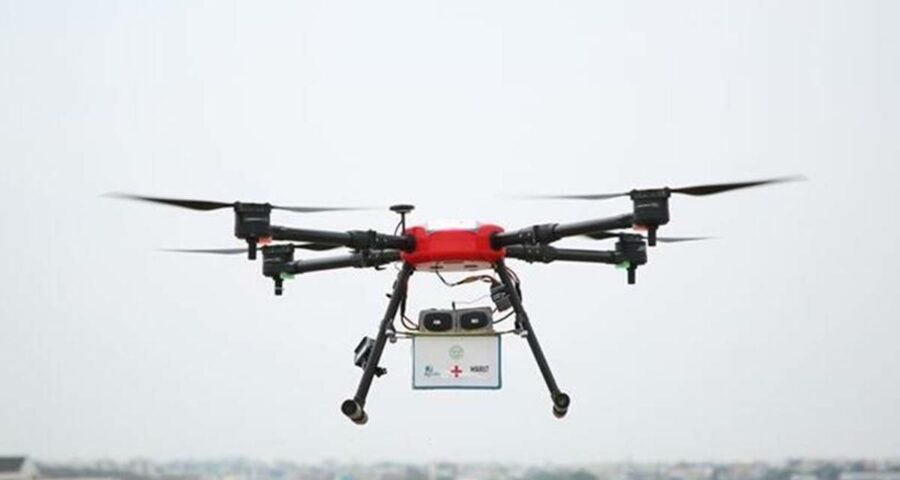Suraj Bonagiri's prototype is a rectangular-shaped drone with four propellers and a flexible chassis (that expands and collapses) that does not cause mid-air turbulence despite its adjustments.
An unmanned aerial vehicle (UAV) with adjustable arms, making it able to lift packages of different sizes and shapes, is the latest innovation from the researchers of the Robotics Research Center (RRC) at the International Institute of Information Technology (IIIT-H) in Hyderabad. ‘Elasticopter’, a patent-pending design developed by 24-year-old Suraj Bonagiri, is considered a big breakthrough in drone technology.
The journey from a novel design to a working prototype of a reconfigurable quadcopter emerged from the limitations of existing delivery drones which focus only on the weight of packages to be lifted while ignoring the size. As drones are designed for unique purposes and to carry specific payloads, any forcible fitting, and lifting of inappropriate payloads will lead to instability, inefficiency, and even compromise safety, Suraj says.
Suraj’s prototype is a rectangular-shaped drone with four propellers and a flexible chassis (that expands and collapses) that does not cause mid-air turbulence despite its adjustments. “In our design, there is zero prop wash interference with the payload no matter its size. In this method of attachment to cargo, the mass is always centered and leads to optimal battery performance,” says Suraj, crediting Prof Spandan Roy and Prof Madhava Krishna for guiding him.
The innovation is now pre-incubated at Product Labs of IIIT-H which works with industry partners to develop market-relevant prototypes from research outputs. The initial prototype built by him resulted in a productisation grant of Rs 8 lakh from the institute. Currently, the fabrication of the second prototype design using high-quality materials is underway and the commercial model is expected to go public by the end of the year.
Speaking to indianexpress.com, Prof. Prakash Yalla, Technology Transfer Officer (TTO) and Head, Product Labs, IIIT-H, said the Elasticopter is a path-breaking multipurpose quadcopter that people have been thinking about for a long time. “Be it in warehousing, logistics, or agriculture, drones of different sizes are used for specific purposes. The Elasticopter is not only able to move in any direction and be able to hold packages of any size, but it is also able to expand and contract to hold the payload and ensure stability while flying. When the drone becomes flexible, aerodynamics becomes a big challenge and the team has cracked that problem,” he added.
Even as Suraj is pursuing his MS (research), he has registered the start-up at IIIT-H’s Center for Innovation and Entrepreneurship (CIE), a 14-year-old incubator. The process of registration for Intellectual Property Rights (IPR) is underway.
Ramesh Loganathan, Professor of Co-Innovation, heading the Research/Innovation outreach at IIIT-H, when contacted, pointed out that the research on ‘pick and place’ drones for material movement and indoor navigation has been going on for several years at the RRC and Suraj’s design is a successful culmination of two years of work.
Stressing that drones today are mostly used for survey purposes with different kinds of cameras mounted on them, and remotely operated, Ranganathan said stabilisation algorithm is the most crucial aspect in drones used for material movement.
“Much research has gone into ensuring stability while flying. What we have is a pick and place drone suitable for material movement. While weight carrying capacity is only one factor, the variability of weight is the biggest factor. This drone has a wide range of applications in the future,” he told indianexpress.com. He noted that a lot of research currently underway at the RRC is focused on autonomous navigation and control of terrestrial as well as aerial vehicles.
Source: Read Full Article


